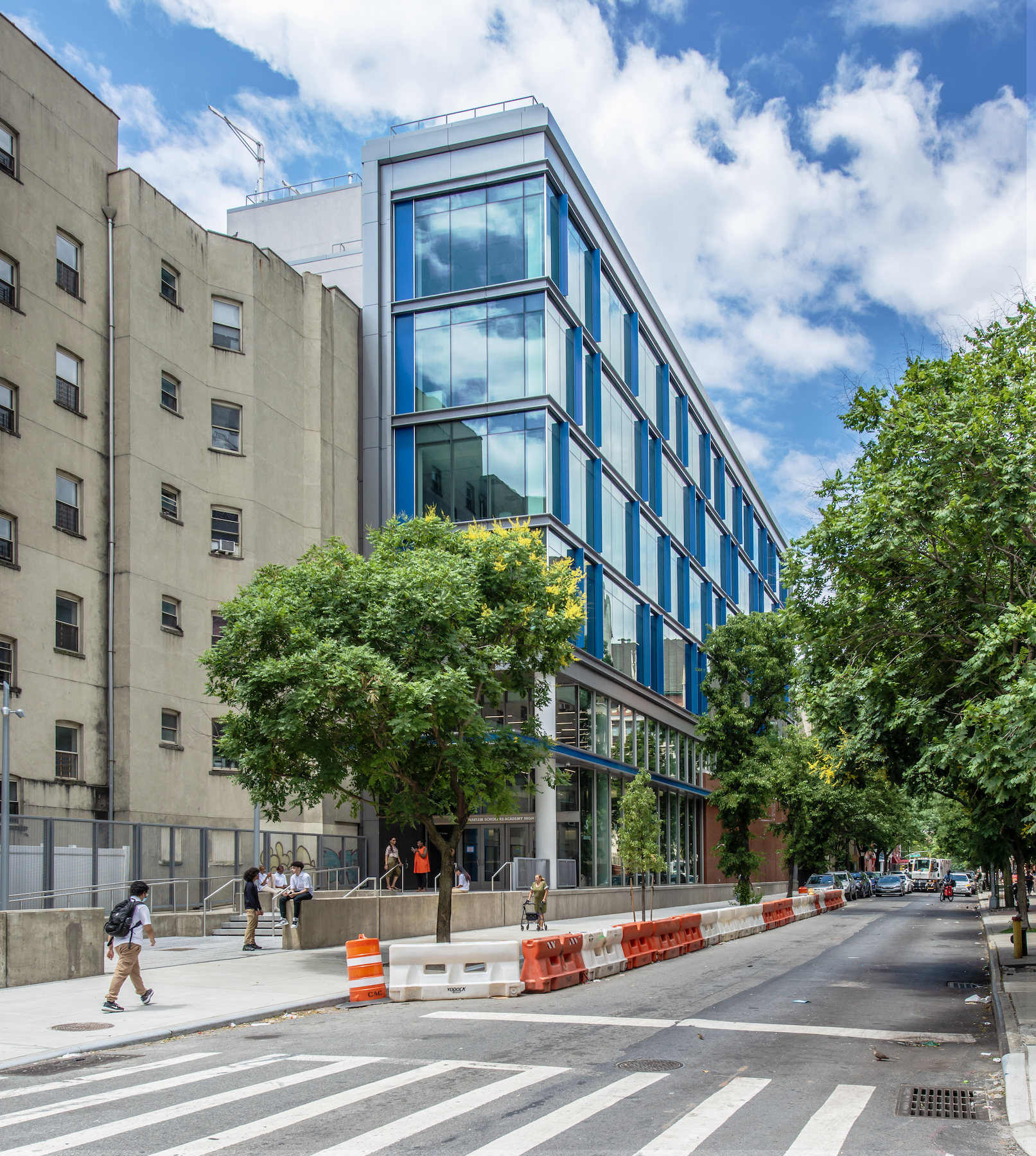New York City’s first new public high school in 60 years opened to students on September 19.
Designed by Ennead Architects, East Harlem Scholars Academy High School aligns with the East Harlem Tutorial Program’s (EHTP) goal to familiarize its students with a collegiate-like environment in preparation for their future academic transition.
“We hope this serves as a model for future public schools throughout the city for years to come,” said Steven Chu, a design partner at Ennead, in a prepared statement.
High school encourages study and research

The 70,000-sf building provides students with spaces needed to support a flexible, enhanced academic schedule, and to accommodate programming across all EHTP schools. The building’s six stories include 25 classrooms, an art and music room, and fully equipped labs for biology, chemistry, and physics.
The school also features a college access suite that encourages study and research, and provides college counseling, SAT and Regents test prep, and EHTP’s flagship College Mentoring Program. The building’s design includes break-out and small-group study areas.
To fit the needs of all students, including those who are neurodivergent, the design team incorporated special lighting and sound, as well as ample acoustical absorption within the walls of the school’s lobby and cafeteria. The design of the classrooms and stairwells lets in natural light and takes into account visibility to reinforce openness and transparency.
School features sustainable design

The school’s amenities include a full-sized gym, a Black Box Theater, and cafeteria, with an eye toward making the school a community hub. To the right of the cafeteria is a backyard terrace. And the building’s glass façade offers generous views of the city.
Sustainability is also on display. To mitigate the effects of flooding, the high school, located on 104th Street and First Avenue, is in a designated flood zone. The lobby is lifted three feet above ground level. And a blue roof captures stormwater for easier drainage.
East Harlem Scholars Academy High School consolidates the 9th, 10th, and 11th grades, which had been operating out of temporary buildings at 96th and 106th streets on Second Avenue. The new school serves 326 students, 67% of whom are Hispanic, and 28% are Black.
Related Stories
| May 29, 2014
7 cost-effective ways to make U.S. infrastructure more resilient
Moving critical elements to higher ground and designing for longer lifespans are just some of the ways cities and governments can make infrastructure more resilient to natural disasters and climate change, writes Richard Cavallaro, President of Skanska USA Civil.
Sponsored | | May 27, 2014
Grim Hall opens the door to fire safety with fire-rated ceramic glass
For the renovation of Lincoln University’s Grim Hall life sciences building into a state-of-the-art computer facility, Tevebaugh Associates worked to provide students and faculty with improved life safety protection. Updating the 1925-era facility's fire-rated doors was an important component of the project.
| May 23, 2014
Big design, small package: AIA Chicago names 2014 Small Project Awards winners
Winning projects include an events center for Mies van der Rohe's landmark Farnsworth House and a new boathouse along the Chicago river.
| May 23, 2014
Top interior design trends: Gensler, HOK, FXFOWLE, Mancini Duffy weigh in
Tech-friendly furniture, “live walls,” sit-stand desks, and circadian lighting are among the emerging trends identified by leading interior designers.
| May 20, 2014
Kinetic Architecture: New book explores innovations in active façades
The book, co-authored by Arup's Russell Fortmeyer, illustrates the various ways architects, consultants, and engineers approach energy and comfort by manipulating air, water, and light through the layers of passive and active building envelope systems.
| May 19, 2014
What can architects learn from nature’s 3.8 billion years of experience?
In a new report, HOK and Biomimicry 3.8 partnered to study how lessons from the temperate broadleaf forest biome, which houses many of the world’s largest population centers, can inform the design of the built environment.
| May 19, 2014
Why e-commerce won't kill 'bricks and mortar' retail sector
Despite emerging structural challenges and newly-announced store closings, such as those of Radio Shack and Office Depot, the U.S. retail sector has continued on its solid recovery.
| May 15, 2014
'Virtually indestructible': Utah architect applies thin-shell dome concept for safer schools
At $94 a square foot and "virtually indestructible," some school districts in Utah are opting to build concrete dome schools in lieu of traditional structures.
| May 13, 2014
Steven Holl's sculptural Institute for Contemporary Art set to break ground at VCU
The facility will have two entrances—one facing the city of Richmond, Va., the other toward VCU's campus—to serve as a connection between "town and gown."
| May 13, 2014
Universities embrace creative finance strategies
After Moody’s and other credit ratings agencies tightened their standards a few years ago, universities had to become much more disciplined about their financing mechanisms.
















